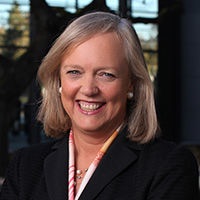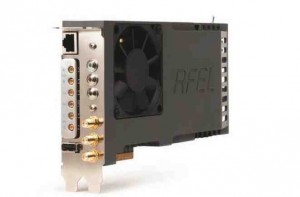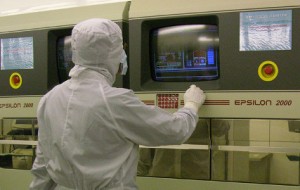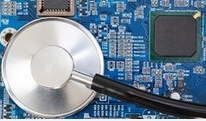 Electronics Weekly presents the finalists for the Elektra European Electronics Industry Awards 2015. After reading a record number of entries this year, the panel of independent judges have filled out their score-cards. The assessment process mean that specialists judged specific categories.
Electronics Weekly presents the finalists for the Elektra European Electronics Industry Awards 2015. After reading a record number of entries this year, the panel of independent judges have filled out their score-cards. The assessment process mean that specialists judged specific categories.
Business Awards – The Elektra Awards promotes exceptional business practice.
Distributor of the Year (Sponsored by Panasonic)
This award category is open to companies that derive a majority of their revenues from the selling of components, systems or software products which are manufactured by their principals.
Digi-Key
Farnell element14
Mouser Electronics
Rapid Electronics
RS Components
Solid State Supplies
TTI
Manufacturer of the Year (Sponsored by Southern Manufacturing & Electronics)
The award will be given to the manufacturer which has demonstrated the most impressive level of commercial success and new business projects in global markets during the past 12 months.
Axiom Manufacturing Services
Asteelflash (Bedford)
AWS
Tenkay Electronics
TT Electronics Integrated Manufacturing Services
New Company of the Year
Venture fund or privately financed companies which have set up operations in Europe in the past five years can enter for this Award.
Ultrahaptics
UltraSoC
Design Team of the Year (Sponsored by Rohde & Schwarz UK)
This award category is open OEMs and design houses involved in product development projects.
AndersDX
ByteSnap Design
Escatec
Plessey
Peratech
Educational Support Award (Sponsored by Mentor Graphics)
This Award will be presented to a company which demonstrates a commitment to the education of engineers of the future by providing support to schools, colleges and universities.
Imagination Technologies
National Instruments
TDK-Lambda
Product Technologies – The Elektra Awards promotes exceptional technical innovation
Design Tools and Development Software Award (Sponsored by Swindon Silicon Systems)
This Award will be presented to the software design tool, application or software IP which demonstrates both outstanding technical capabilities and usability. Product types eligible for this category are EDA chip, design verification, emulators, PCB design tool suites and embedded development tools for microcontroller based systems.
Cadence Design Systems – Automotive functional safety verification
Future Facilities – 6SigmaET Release 9
Mentor Graphics – Calibre xACT platform
National Instruments – LabVIEW Communications System design suite
Silicon Labs – Simplicity Studio software suite
Xilinx – SDSoC development environment
Passive & Electromechanical Product of Year
Product types eligible are resistors, capacitors, inductors, sensors, switches, connectors or actuators which were introduced in the past 12 months
AVX – Hermetically sealed conductive polymer tantalum capacitors
Cliff Electronics – XLR feed-through
DelfMEMS – SP12T RF MEMS contact switch
Harwin – M300 hi-rel power connector series
Kemet – F862 film capacitor
Vishay Intertechnology – Enycap hybrid energy storage capacitor
Power System Product of the Year
Eligible product types are DC-DC, AC-DC power modules, open, closed and encapsulated power supplies, power ICs and discrete power components.
Analog Devices – ADM7154 low noise RF linear regulator
Freescale Semiconductor – RF power GaN transistor in plastic package
Linear Technology – LTM4623
Maxim Integrated – Himalaya power module
Power Integrations – InnoSwitch range of switcher ICs
TDK-Lambda – ZMS100 AC-DC power supply
Renewable Energy Design Award
Eligible products will include hardware/software systems or semiconductor products.
Heliatek – HeliaFilm
Zeta Specialist Lighting – Solar poster case kit
Semiconductor Product of the Year – Analogue (Sponsored by Mouser Electronics)
This award will be presented to an analogue or mixed-signal semiconductor product which demonstrates outstanding technical capabilities and usability.
AMS – TMG399x gesture sensor
Freescale Semiconductor – FXTH87 tyre pressure monitor
Intersil – TW9984 automotive safety four-channel video decoder
Novelda – X2M200 respiration sensor module
On Semiconductor – Medical sensor system-in-package
Peregrine Semiconductor – UltraCMOS monolithic phase & amplitude controller
Semiconductor Product of the Year – Digital (Sponsored by GCS Engineering)
This award will be presented to a digital semiconductor IC which demonstrates outstanding technical capabilities and usability.
Altera – Stratix 10 FPGAs and SoCs
Ambiq Micro – Apollo microcontroller
Cypress Semiconductor – PSoC 4 and PRoC Bluetooth LE
Linear Technology – LTC2983 digital output temperature sensor
Lattice Semiconductor – iCE40 UltraLite FPGA
Xilinx – Zynq UltraScale MPSoCs
LED Lighting Product of the Year (Sponsored by Anglia)
Eligible products are LEDs, lighting modules, luminaires and driver ICs.
Cambridge Nanotherm – Nanotherm DM
Khatod Optoelectronic – Gaia optical system
On Semiconductor – Ballast and LED driver for automotive front lights applications
Zeta Specialist Lighting – The SlamTube
Test Product of the Year
Eligible products include benchtop, handheld, modular, PXI-based, boundary scan and in-circuit production test equipment.
Anritsu – MT8821C radio communication analyser
Keysight Technologies – E5080A ENA network analyser
Labnation BVBA – SmartScope
National Instruments – PXIe-8880 eight-core PXI controller and chassis
Rohde & Schwarz – FSWP phase noise analyser and VCO tester
Tektronix – RSA306 handheld USB spectrum analyser
Internet-of-Things Product Innovation Award (Sponsored by Micron)
Eligible products must provide some element of the IoT – wireless communications, security, storage or user applications, and the product must have been introduced in the past 12 months.
Antenova – The Weii antenna
Arrow Electronics – SmartEverything development board
Imagination Technologies – Whisper radio processor
Lynx Software Technology – Persistent threat detection software
Panasonic Automation and Industrial – Grid-Eye infrared array sensor wireless board
Renesas Electronics – Synergy platform
The other awards include:
Consumer Product Innovation of the Year – Online vote (Sponsored by Avnet)
In this category visitors to the Electronics Weekly website are invited to select the Consumer Electronic Product Innovation which they feel makes the most inspirational use of technology. A shortlist of products will be selected by the Editor.
University Research Award – Online vote (Sponsored by RS Components)
In this category visitors to the Electronics Weekly website are invited to select the university research project which they feel will make the largest impact on the commercial market in the next five years. A shortlist of research projects will be selected by the Editor.
Four Awards will be presented for:
Excellence in Design in High-Reliability Systems (Sponsored by Vicor)
Excellence in Design in Medical
Excellence in Design in Industrial
Excellence in Design in Automotive
Judges:
Steve Furber ICL professor of computer engineering, School of Computer Science, University of Manchester
Professor Rahim Tafazolli, director of the 5GIC, University of Surrey
Paul Hide, director of operations, techUK
Claudio Zizzo, head of electronics at Dyson
Derek Boyd, CEO, NMI
Jon Howes, technology director, Beecham Research
Nick Flaherty, technology writer.
Mick Elliot, online editor
Adam Fletcher, chairman, Electronic Component Supply Network
Graham Prophet, technology editor
Richard Wilson, editor, Electronics Weekly
Steve Bush, technology editor, Electronics Weekly
The industry’s largest technology and business awards are in their 12th year of celebrating the best the electronics industry has achieved. The Elektra Awards, which are the industry’s largest and longest running awards, demonstrate the inherent strength of the industry and the ambition and vision of the individuals who work in it.
The awards will be presented at the industry’s biggest gala evening dinner on Tuesday 24 November at the Lancaster London Hotel. Book your table now »
Richard Wilson










